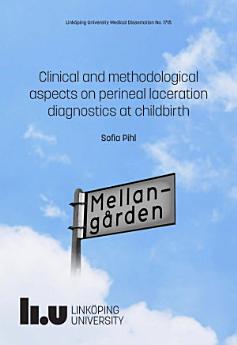Clinical and methodological aspects on perineal laceration diagnostics at childbirth
About this ebook
Material and Methods: Study I is a methodological study of transperineal ultrasound of the anovaginal distance. The learning curve and inter-observer agreement of the method is studied between three examiners in an outpatient gynaecological setting. Study II is a prospective observational study of 150 primiparous women with suspected perineal laceration of degree 2-3 immediately after childbirth and the association between bidigital palpation of the perineal height, the anovaginal distance and the final diagnosis of the perineal laceration. Study III is a retrospective observational study with data from the Swedish national Perineal Laceration Registry, studying maternal and obstetric risk factors for internal anal sphincter injury in 3,333 women with external sphincter injury. Study IV is a follow-up study focusing on the implementation strategies and outcome when introducing a new method, (the Diagnostics After DELivery – DADEL concept) for examining perineal lacerations at a maternity ward. The DADEL concept consists of a combination of bidigital palpation of the perineal tissues and transperineal ultrasound in order to determine the degree of perineal lacerations.
Results and conclusions: In study I, the method of transperineal ultrasound measurement of anovaginal distance revealed a short learning period and high interobserver agreement. This indicated that the method can be taught and reliably used in further research and clinical practice. In study II, women with external sphincter injury had a shorter anovaginal distance compared to women without this injury. The palpatory perineal thickness was associated with the anovaginal distance. Study III showed that 33% of primiparous women with an external anal sphincter injury also had an internal anal sphincter injury diagnosed immediately after delivery. When the infant was born with a hand or arm beside the head, there was an increased risk for internal anal sphincter injury. Perineal palpatory thickness of less than 10 mm was significantly associated with an internal anal sphincter injury. In the follow-up study of diagnostic methods showed a significantly higher use of bidigital palpation five years after introduction of the DADEL concept. The use of transperineal ultrasound showed no significant change during the same period.




